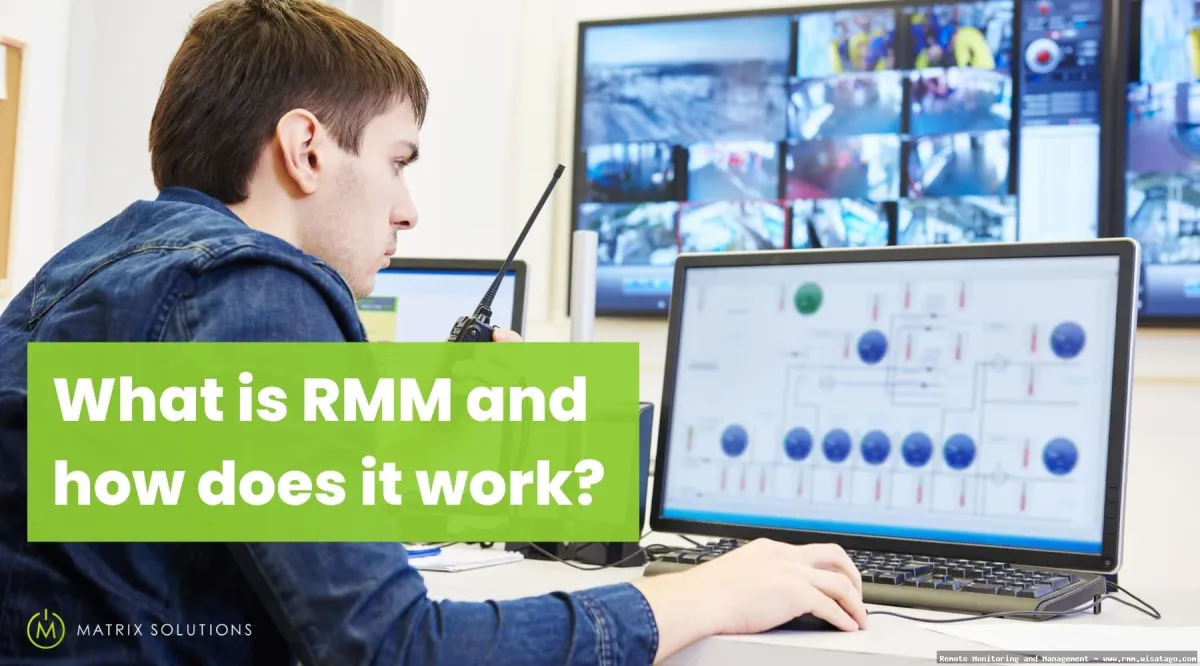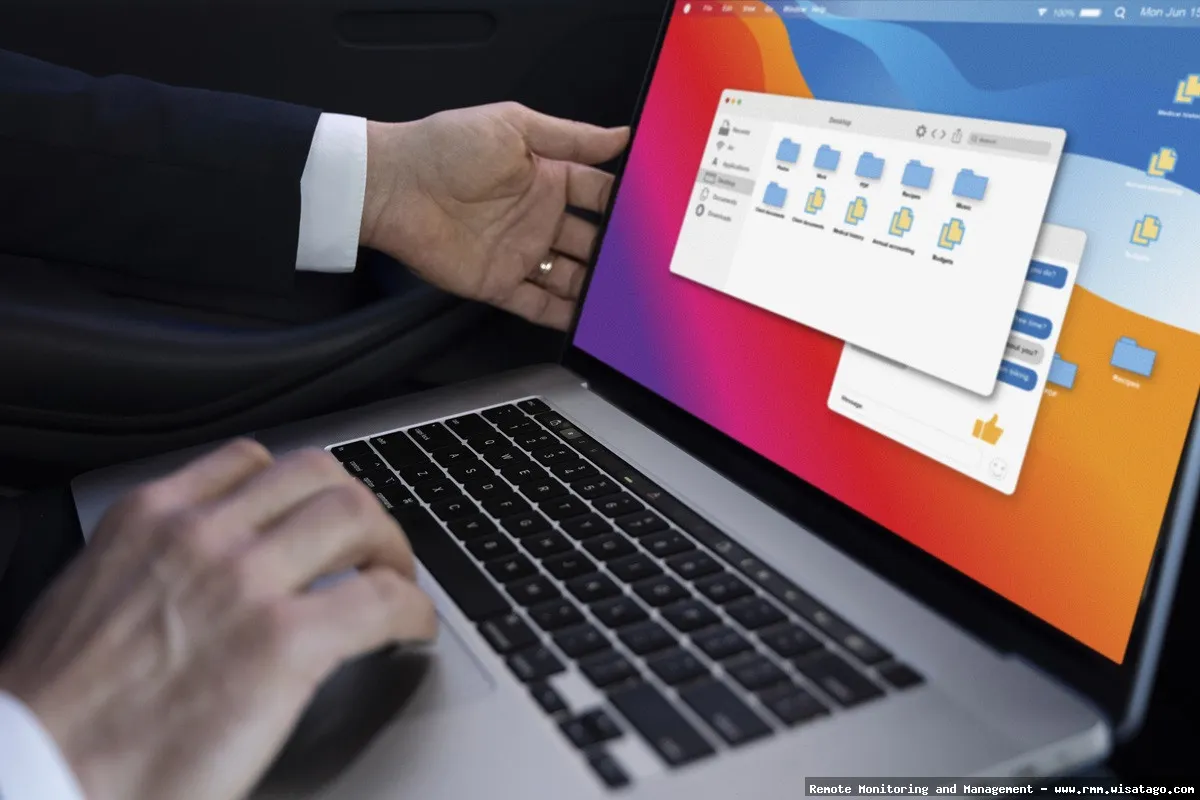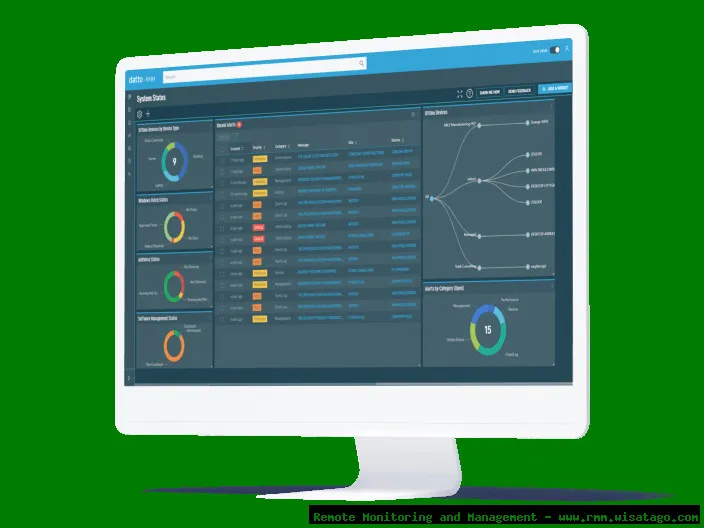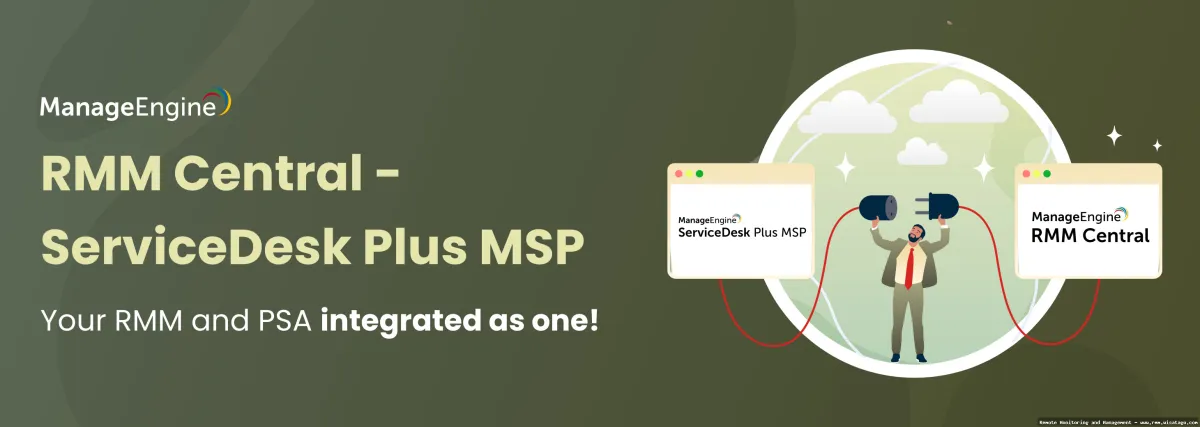In today’s complex IT landscape, managing a growing number of endpoints, applications, and licenses can feel like herding cats. For enterprises, the challenge is amplified tenfold. You’re not just dealing with a handful of devices; you’re managing potentially thousands across multiple locations, each with its own set of software, configurations, and security vulnerabilities. This is where Enterprise Remote Monitoring and Management (RMM) solutions come into play, offering a centralized platform to streamline IT operations and maintain control over your entire IT infrastructure.
But RMM is more than just monitoring and patching. It’s about proactive management, automation, and ultimately, reducing the burden on your IT team. One of the most crucial aspects of effective RMM is license management. Properly managing software licenses ensures compliance, avoids costly penalties, and optimizes software spending. Imagine the headache of an audit revealing hundreds of unlicensed software installations – an RMM solution with robust license management capabilities can prevent this nightmare scenario.

This article delves into the world of Enterprise RMM solutions with a specific focus on license management. We’ll explore the key features, benefits, and considerations when choosing the right RMM platform for your organization. We’ll also discuss the challenges you might face during implementation and how to overcome them, ensuring you get the most out of your investment. Think of this as your comprehensive guide to navigating the RMM landscape and empowering your IT team to efficiently manage your enterprise’s digital assets.
What is Enterprise RMM?
Enterprise RMM (Remote Monitoring and Management) is a comprehensive software suite designed to help IT professionals remotely monitor, manage, and support their clients’ or internal IT infrastructure. Think of it as a central command center for your entire IT environment. It goes beyond simple network monitoring by providing tools for proactive maintenance, automated tasks, and rapid response to issues, regardless of where your endpoints are located. The “Enterprise” aspect signifies that these solutions are built to handle the scale and complexity of large organizations, with features tailored to support a significant number of devices and users.
Key Capabilities of Enterprise RMM
An effective Enterprise RMM solution typically includes the following key capabilities:

- Remote Monitoring: Real-time monitoring of servers, workstations, network devices, and applications to identify potential issues before they impact users.
- Remote Access and Control: Secure remote access to endpoints for troubleshooting, maintenance, and support.
- Patch Management: Automated patching of operating systems and third-party applications to keep systems secure and up-to-date.
- Automation: Automating repetitive tasks, such as software deployment, configuration changes, and script execution.
- Alerting and Reporting: Customizable alerts based on pre-defined thresholds and comprehensive reporting on system performance, security, and compliance.
- Security Management: Features such as antivirus management, endpoint detection and response (EDR) integration, and vulnerability scanning.
- Asset Management: Tracking hardware and software assets, including serial numbers, configurations, and license information.
- License Management: Monitoring software usage, tracking license keys, and ensuring compliance with licensing agreements.
The Importance of License Management in RMM
While the other features of RMM are undeniably valuable, license management deserves special attention. Inadequate license management can lead to significant financial and legal risks. Overspending on unused licenses, non-compliance penalties, and security vulnerabilities associated with outdated software are just a few of the potential consequences.
Why License Management Matters
Here’s a closer look at why license management is crucial for enterprises:
- Compliance: Ensures adherence to software licensing agreements, avoiding costly fines and legal repercussions from software vendors.
- Cost Optimization: Identifies underutilized licenses, allowing you to reallocate them or reduce future purchases. Prevents overspending on unnecessary software.
- Security: Tracks software versions and identifies outdated applications that may be vulnerable to security threats. Ensures that all software is properly licensed and patched.
- Centralized Visibility: Provides a single pane of glass for managing all software licenses across your organization, simplifying tracking and reporting.
- Audit Readiness: Streamlines the audit process by providing accurate and up-to-date license information, making it easier to demonstrate compliance.
Key Features of RMM License Management
A robust RMM solution with integrated license management should offer a comprehensive set of features to effectively manage your software assets. Here are some key functionalities to look for:

Essential License Management Features
- Software Discovery: Automatically discovers and identifies all software installed on managed endpoints.
- License Key Tracking: Stores and manages license keys, serial numbers, and activation codes.
- Usage Monitoring: Tracks software usage patterns to identify underutilized or overused licenses.
- License Compliance Reporting: Generates reports on license compliance status, highlighting potential violations.
- Alerting and Notifications: Provides alerts when licenses are nearing expiration or when usage exceeds the allocated limit.
- Software Blacklisting/Whitelisting: Ability to restrict or allow specific software applications from being installed or run on managed endpoints.
- Integration with Software Vendors: Integration with software vendors’ licensing portals for automated license activation and management (if available).
- Centralized License Pool Management: Allows for the creation and management of license pools for different departments or users.
Benefits of Using RMM for License Management
Implementing an RMM solution with license management offers numerous benefits, leading to improved efficiency, reduced costs, and enhanced security.
Tangible Advantages of RMM-Based License Management
- Improved Efficiency: Automates license tracking and management, freeing up IT staff to focus on more strategic initiatives.
- Reduced Costs: Optimizes software spending by identifying and reallocating unused licenses, avoiding unnecessary purchases.
- Enhanced Security: Ensures that all software is properly licensed and patched, reducing the risk of security vulnerabilities.
- Simplified Compliance: Streamlines the audit process and helps demonstrate compliance with software licensing agreements.
- Better Visibility: Provides a single pane of glass for managing all software licenses across the organization, improving transparency and control.
- Proactive Management: Enables proactive license management, allowing you to address potential issues before they impact users.
Challenges of Implementing RMM with License Management
While the benefits of RMM and license management are undeniable, implementing these solutions can present certain challenges. It’s important to be aware of these potential hurdles and plan accordingly.
Common Implementation Challenges and Solutions
- Complexity: RMM solutions can be complex to configure and manage, especially for large enterprises.
- Solution: Invest in proper training for your IT staff or consider partnering with a managed service provider (MSP) that specializes in RMM.
- Data Accuracy: Ensuring the accuracy of software discovery and license information can be challenging.
- Solution: Implement robust software discovery processes and regularly audit license data to identify and correct discrepancies.
- Integration Issues: Integrating RMM with existing IT systems can be complex.
- Solution: Choose an RMM solution that offers robust APIs and integrations with other IT tools, such as ticketing systems and asset management databases.
- User Adoption: Getting users to adopt new software and processes can be challenging.
- Solution: Communicate the benefits of RMM to users and provide adequate training to ensure they understand how to use the new tools.
- Cost: RMM solutions can be expensive, especially for large enterprises.
- Solution: Carefully evaluate your needs and choose an RMM solution that offers the features you require at a price that fits your budget. Consider a phased implementation to spread out the costs.
Choosing the Right Enterprise RMM Solution
Selecting the right Enterprise RMM solution is a critical decision that can significantly impact your IT operations. It’s essential to carefully evaluate your needs and choose a solution that meets your specific requirements.

. Considering the importance of operational efficiency, many MSPs are exploring Profitable Rmm Solutions to enhance their service offerings and boost revenue
Factors to Consider When Selecting an RMM Solution
- Scalability: The solution should be able to scale to meet the needs of your growing organization.
- Features: The solution should offer the features you need, including remote monitoring, remote access, patch management, automation, and license management.
- Integration: The solution should integrate seamlessly with your existing IT systems.
- Security: The solution should be secure and protect your data from unauthorized access.
- Ease of Use: The solution should be easy to use and manage.
- Support: The vendor should offer excellent support.
- Cost: The solution should be affordable and offer a good return on investment.
- License Management Capabilities: Thoroughly evaluate the license management features, ensuring they meet your compliance and cost optimization goals.
Conclusion
Enterprise RMM solutions with license management are essential for organizations looking to streamline IT operations, reduce costs, and enhance security. By centralizing management, automating tasks, and providing real-time visibility into your IT infrastructure, RMM empowers IT teams to proactively address issues and ensure optimal performance. The addition of robust license management capabilities further enhances the value proposition, enabling organizations to maintain compliance, optimize software spending, and mitigate the risks associated with outdated or unlicensed software.
While implementing an RMM solution can present certain challenges, the benefits far outweigh the risks. By carefully evaluating your needs, choosing the right solution, and investing in proper training, you can successfully implement RMM and transform your IT operations. Remember to prioritize solutions that provide comprehensive license management features to gain maximum control over your software assets and ensure long-term cost savings and compliance.
Ultimately, the right RMM solution with strong license management will not only simplify your IT management but also contribute significantly to the overall success and security of your enterprise.

Conclusion
In conclusion, implementing an enterprise RMM solution with integrated license management is no longer a luxury, but a critical necessity for organizations striving for operational efficiency, cost optimization, and robust security. As we’ve explored, the ability to centrally monitor, manage, and automate IT tasks, coupled with precise control over software licenses, yields significant benefits that directly impact the bottom line. The challenges of software sprawl, compliance risks, and inefficient resource allocation can be effectively mitigated through the strategic adoption of these comprehensive RMM platforms.
Ultimately, the decision to invest in an enterprise RMM solution with license management should be viewed as a strategic investment in your organization’s future. By streamlining IT operations and ensuring compliance, these solutions empower IT teams to focus on strategic initiatives that drive business growth. We encourage you to thoroughly evaluate your current IT infrastructure and software licensing practices. Explore the leading RMM solutions available and consider the specific needs of your organization. To learn more about how a tailored RMM solution can transform your IT management, we invite you to request a demo and discover the power of proactive IT management.
Frequently Asked Questions (FAQ) about Enterprise RMM Solutions with License Management
What are the key benefits of using an Enterprise RMM (Remote Monitoring and Management) solution with license management capabilities for a large organization?
Implementing an Enterprise RMM solution with license management offers several significant benefits for large organizations. Firstly, it provides centralized visibility and control over all managed devices and software licenses across the entire network, regardless of location. This reduces the risk of non-compliance and associated penalties. Secondly, it streamlines software deployment and patching, ensuring that all endpoints are running the latest versions and security updates, minimizing vulnerability to cyber threats. Thirdly, automated license tracking and usage reporting optimize software spending by identifying underutilized licenses that can be reallocated or eliminated. Finally, it improves IT efficiency by automating routine tasks like software inventory, license reconciliation, and compliance auditing, freeing up IT staff to focus on more strategic initiatives. Effective IT management often involves a proactive approach, and RMM is a key element in achieving that level of oversight
.
How can an Enterprise RMM solution with integrated license management help my organization avoid software compliance issues and potential legal penalties?
An Enterprise RMM solution with integrated license management is crucial for avoiding software compliance issues. These solutions offer real-time tracking of software installations and usage across all endpoints, ensuring that the organization doesn’t exceed its licensed user count for any software. The RMM provides automated alerts when license limits are approached or exceeded, allowing IT administrators to proactively address potential violations. Detailed reporting features generate audit-ready reports, demonstrating compliance with software licensing agreements. By automating these processes, the RMM reduces the risk of human error, which is a common cause of compliance breaches, and helps avoid costly fines, legal penalties, and reputational damage associated with software piracy or non-compliance.
What features should I look for when choosing an Enterprise RMM software solution with comprehensive license management, and how do I ensure it integrates well with my existing IT infrastructure?
When selecting an Enterprise RMM software solution with comprehensive license management, prioritize features such as automated software discovery, real-time license usage tracking, comprehensive reporting (including compliance and cost analysis), automated software deployment and patching, and integration with other IT management tools. The solution should support a wide range of software vendors and license types. To ensure smooth integration with your existing IT infrastructure, look for solutions that offer APIs or pre-built integrations with your current help desk, asset management, and security platforms. Consider a proof-of-concept (POC) or trial period to test the solution’s compatibility and functionality within your specific environment. Evaluate the vendor’s support and training resources to ensure your IT team can effectively utilize the RMM‘s capabilities.